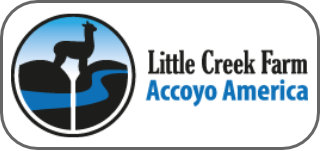- Agronomists are urging graziers to consider gibberellic acid as a boost for their pasture growth in the cold months as many move out of cropping, seeking livestock cashflow. The data is in on the benefits of applying gib acid after trials in the Central Tablelands. It is found to be effective on boosting growth in grasses such as phalaris, cocksfoot and perennial rye, with the boost in dry matter between 300-500kg/hectare possible after application. Agronomist Jesh Smith, Growmore, Young, said gib acid was "a cheap way to get feed". "It is a natural hormone that helps a plant grow bigger cells and therefore bigger leaves." He said the cost of gib acid was about $10/ha, and so it was the "best bang for buck" in winter as the temperatures dropped and pastures were under pressure. He recommended a three to four week holding period. more »
- Objectives: 1.To assess the worm control practices used by alpaca farmers in Australia by conducting a questionnaire survey 2.To determine the prevalence of gastrointestinal nematodeof alpacas in various climatic zones in Australia, using traditional and the latest molecular diagnostic methods 3.To undertake field efficacy studies to determine the status of anthelmintic resistance in gastrointestinal nematodes of alpacas 4.To train a research higher degree (MPhil/PhD) student more »
- BACKGROUND: Gastrointestinal nematodes (GINs) can cause significant economic losses in alpacas due to lowered production of fibre and meat. Although no anthelmintics are registered for use in alpacas, various classes of anthelmintics are frequently used to control parasitic gastroenteritis in alpacas in Australia and other countries. Very little is known about the current worm control practices as well as the efficacy of anthelmintics used against common GINs of alpacas. This study aimed to assess the existing worm control practices used by Australian alpaca farmers and to quantify the efficacy of commonly used anthelmintics against GINs of alpacas. more »
- Humid air, moist grass and mild temperatures are ‘party central’ for the enemies of alpacas – gastrointestinal worms. More alpacas die through parasitic infestation than virtually any other single cause, yet owners often find it difficult to spot the signs of infestation, and improve husbandry to reduce the effects. Many nematode worm species occupy sections in the gastrointestinal tract of your alpacas. From mouth to rectum is a warm, moist, dark space, perfect for feeding, growing and reproducing. Consider it from the worms’ perspective, life could not be better, tucked away with constant warm temperature, food and protection at no cost to them. Of course, as in all ecosystems, and the digestive tract of your alpacas is an ecosystem, there will be competition between worms for the best ‘pitch’. Different species of worm favour different spaces within the tract. The worm must avoid immune responses of the host but in the main the gut is a very hospitable place for worms to survive, hence their success. These insidious parasites share a common objective; to shelter, grow and reproduce within their host, bringing nothing to the party whilst taking all they can. more »
- Recently we calculated the probabilities of several mating scenarios producing a homozygous recessive, assuming the test animal (invariably a male) is a carrier. As most recessive alleles are not wanted, the sooner a carrier can be identified, the sooner it can be culled from a breeding programme. But knowing the odds aren’t quite enough — odds are an indicator and not a guarantee of outcome. By sheer luck a carrier may produce a homozygous recessive after just one mating. Or it could take three, or ten, or more, matings — it’s all down to the random assortment of alleles and which sperm fertilises which egg. As well as knowing the odds, breeders also need to know how many matings are required to be confident that a tested animal isn’t a carrier. We need to know the level of confidence. more »
